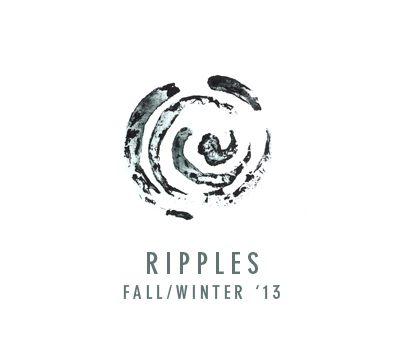
CONCEPT
The basis of research for the collection “Ripples” comprises principles of deconstruction and the Japanese fashion aesthetics. Notions such as provocative, radical, unwearable and incomprehensible often emerge in connection with Japanese designers. Although their work has been widely interpreted through the terminology of art and architecture, their designs have been created for wearing – both physically and psychically. Such an approach habitually engages in experimenting and often deconstructs principles of classic pattern making. It decomposes traditional construction methods and techniques while disregarding the shape of the body, in order to reexamine forms, structure and design of clothes. Japanese designers have demonstrated through a number of fashion collections that it is possible to customize the garments considered unwearable and make them fully wearable indeed.
The fashion in the West has always emphasized the human body. The clothes making has been based on producing three-dimensional shapes using darts and curves and garments have usually followed and fitted the figure. I have been attracted into research of Japanese design methods through certain characteristics that significantly differ from the traditional western approach. The garments created in Japanese fashion are not tight, shapes are unusual and exciting, the use of textiles is interesting, designs are not strictly divided according to gender, and in some cases garments are the real works of art. Japanese techniques of clothes construction rarely rely on canonical procedures, exact measures and rules of conventional construction and often allow possibilities of experimenting with patterns, learning from mistakes and creating new forms.
The main approach in designing the collection investigates asymmetry, an important aspect of alternative clothes making, opposing the conventional aesthetics of symmetry, especially the golden ratio, which has been regarded in the West as an ideal, as elegance and luxury.
The collection uses elements of humor as a design critique of mass production, contemporary mainstream aesthetics, uniformity and dismal character of trends that lack surprise and joy as well as questions the aggressive "sexy" tendency dictating anorexic look, use of too tight and too small clothes, overuse of beauty products, chemicals and implants.
To keep the collection consistent with the initial idea, I used mostly simple affordable textiles from natural fibers that fitted perfectly with the whole concept. Apart from being considerably more comfortable than synthetic ones, natural textiles are also biodegradable and recyclable.
The basis of research for the collection “Ripples” comprises principles of deconstruction and the Japanese fashion aesthetics. Notions such as provocative, radical, unwearable and incomprehensible often emerge in connection with Japanese designers. Although their work has been widely interpreted through the terminology of art and architecture, their designs have been created for wearing – both physically and psychically. Such an approach habitually engages in experimenting and often deconstructs principles of classic pattern making. It decomposes traditional construction methods and techniques while disregarding the shape of the body, in order to reexamine forms, structure and design of clothes. Japanese designers have demonstrated through a number of fashion collections that it is possible to customize the garments considered unwearable and make them fully wearable indeed.
The fashion in the West has always emphasized the human body. The clothes making has been based on producing three-dimensional shapes using darts and curves and garments have usually followed and fitted the figure. I have been attracted into research of Japanese design methods through certain characteristics that significantly differ from the traditional western approach. The garments created in Japanese fashion are not tight, shapes are unusual and exciting, the use of textiles is interesting, designs are not strictly divided according to gender, and in some cases garments are the real works of art. Japanese techniques of clothes construction rarely rely on canonical procedures, exact measures and rules of conventional construction and often allow possibilities of experimenting with patterns, learning from mistakes and creating new forms.
The main approach in designing the collection investigates asymmetry, an important aspect of alternative clothes making, opposing the conventional aesthetics of symmetry, especially the golden ratio, which has been regarded in the West as an ideal, as elegance and luxury.
The collection uses elements of humor as a design critique of mass production, contemporary mainstream aesthetics, uniformity and dismal character of trends that lack surprise and joy as well as questions the aggressive "sexy" tendency dictating anorexic look, use of too tight and too small clothes, overuse of beauty products, chemicals and implants.
To keep the collection consistent with the initial idea, I used mostly simple affordable textiles from natural fibers that fitted perfectly with the whole concept. Apart from being considerably more comfortable than synthetic ones, natural textiles are also biodegradable and recyclable.
TOOLS
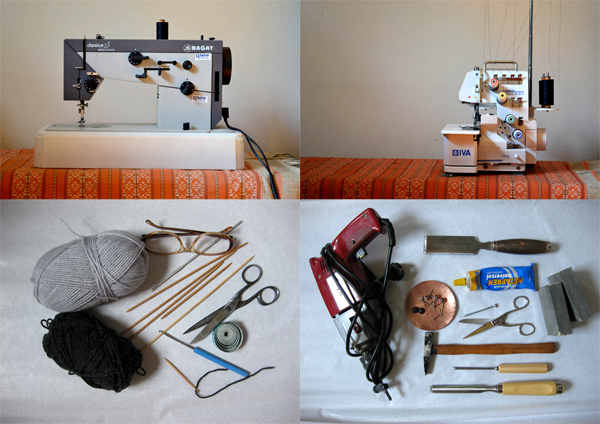
PROCESS
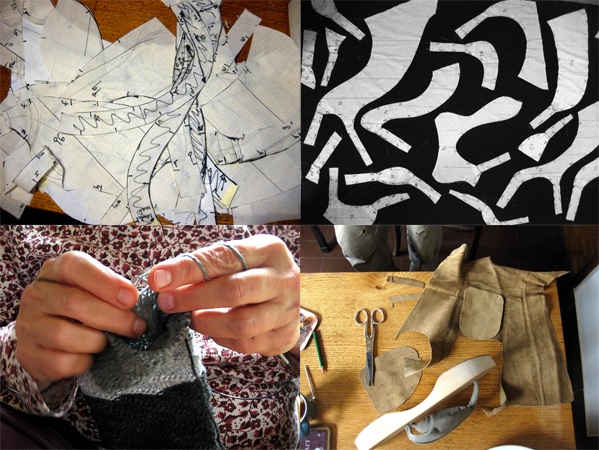
"RIPPLES"
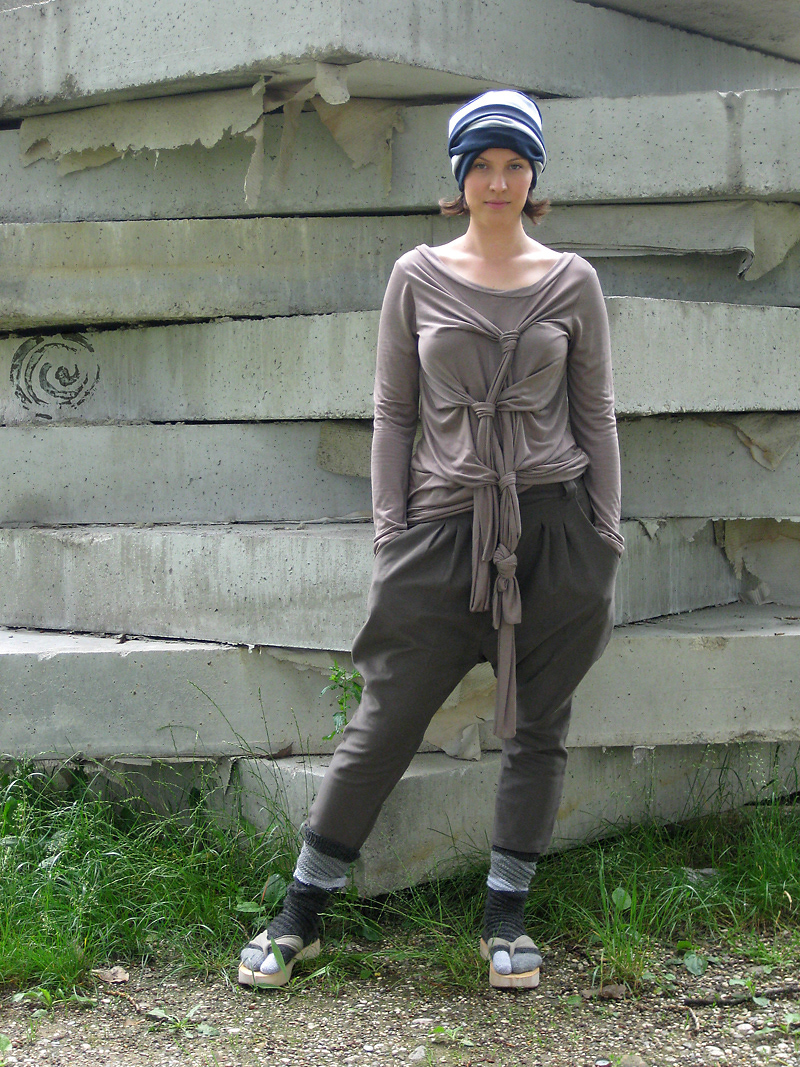
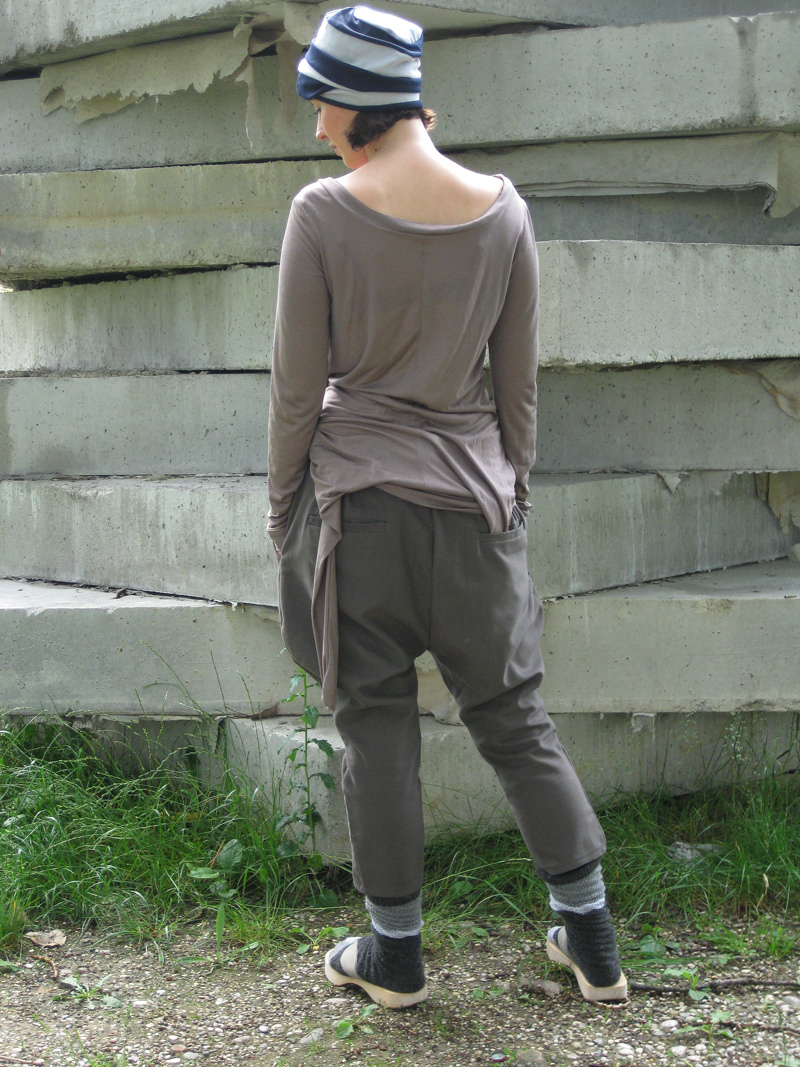
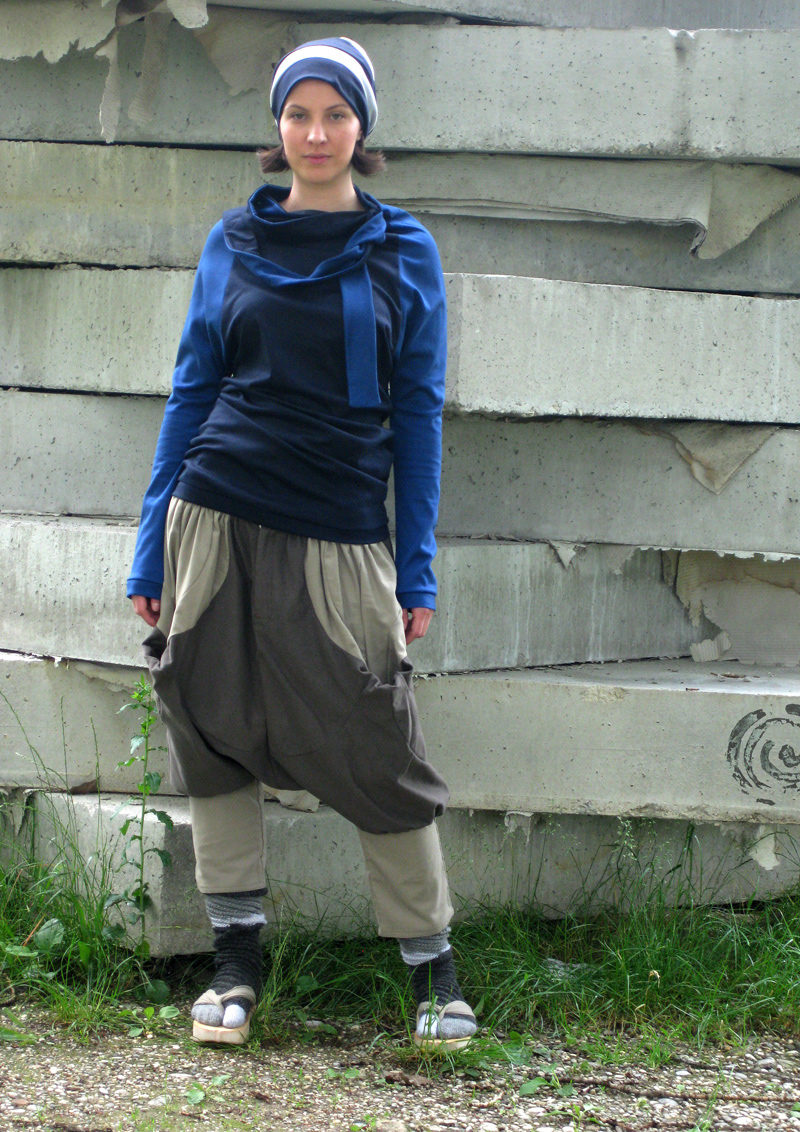



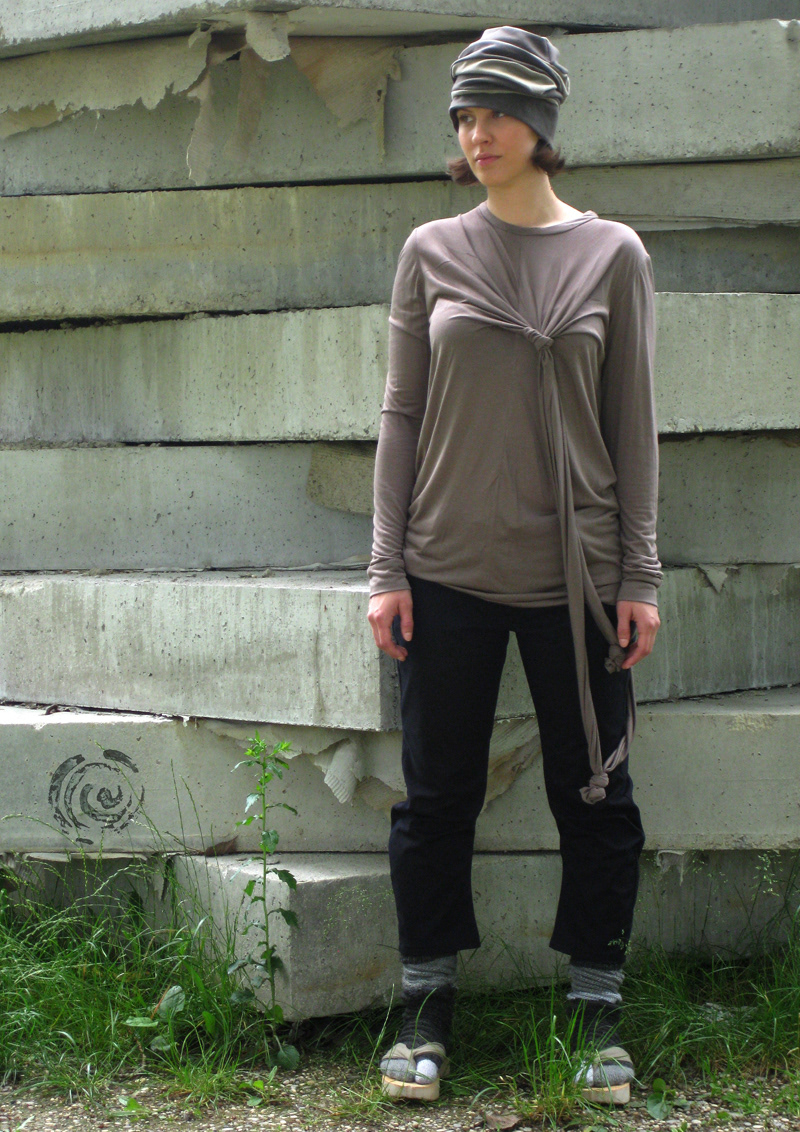
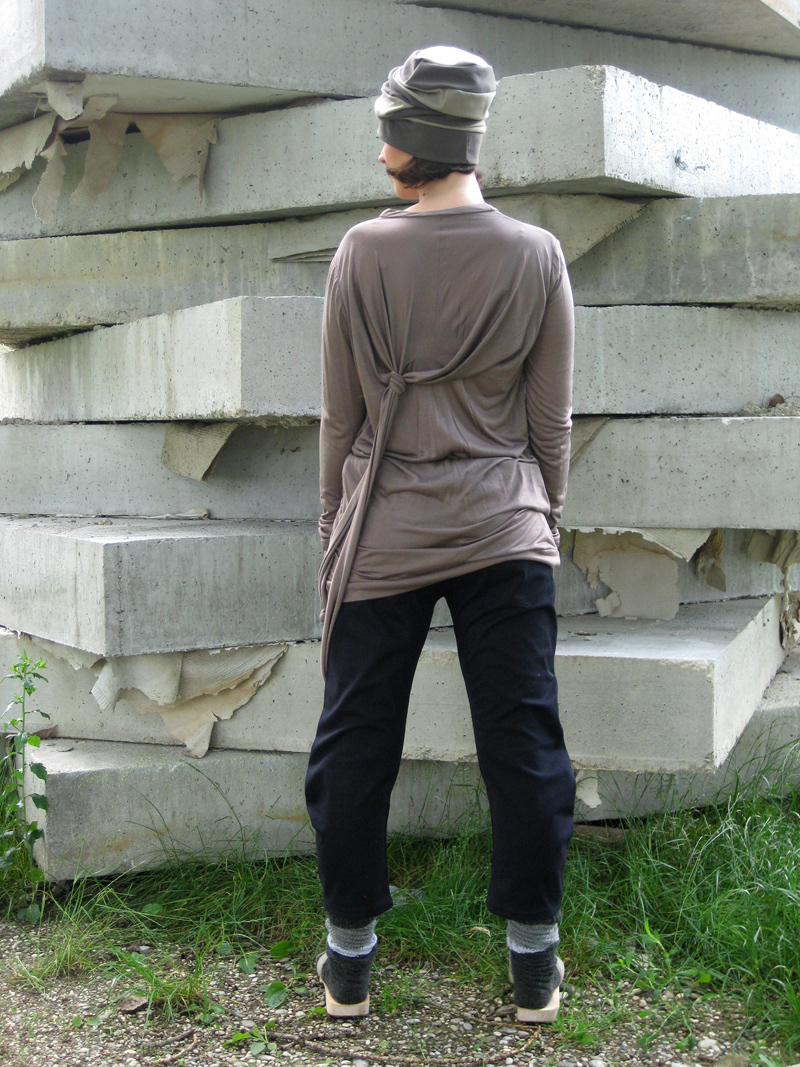
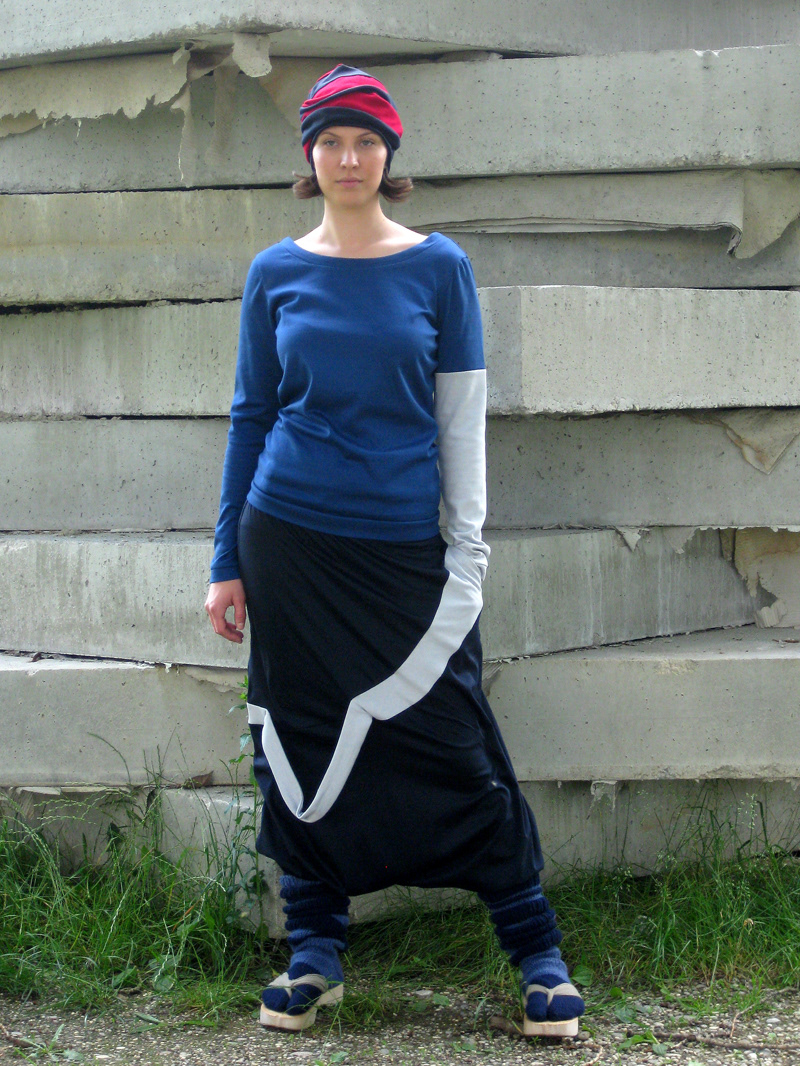
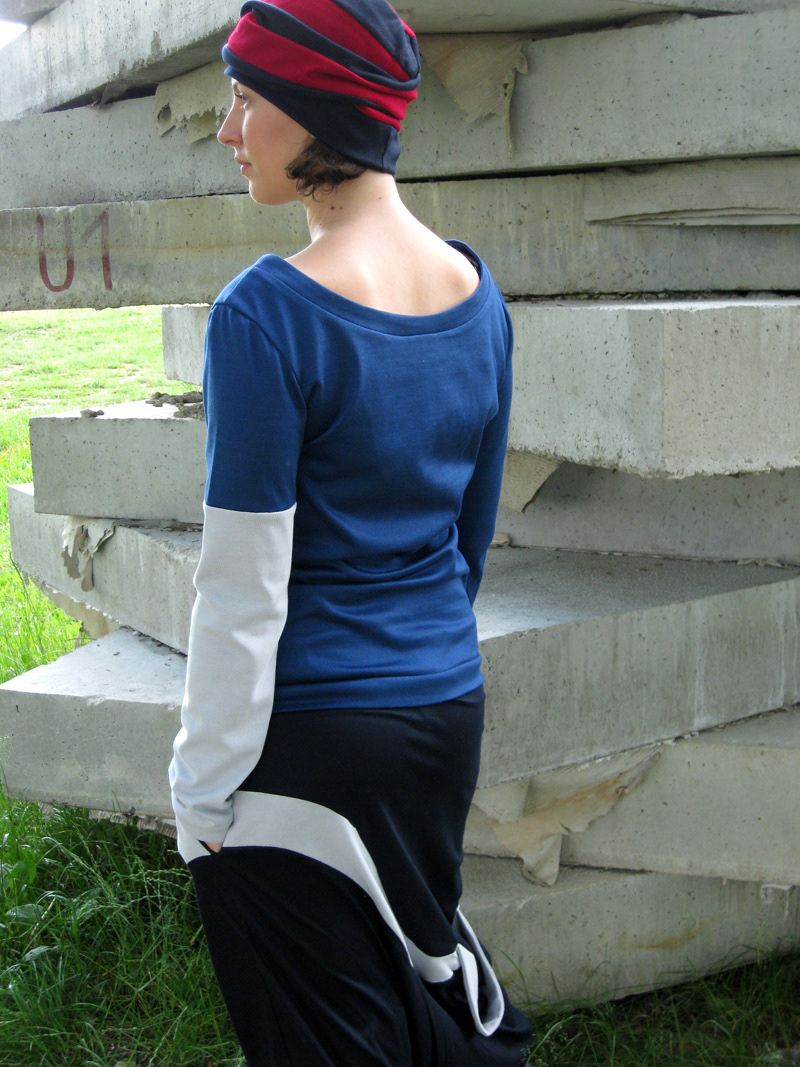
ACCESSORIES
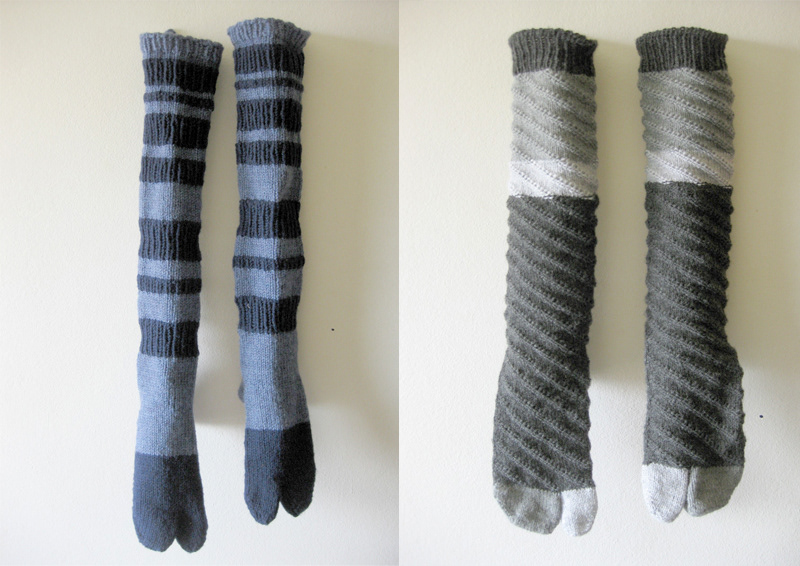
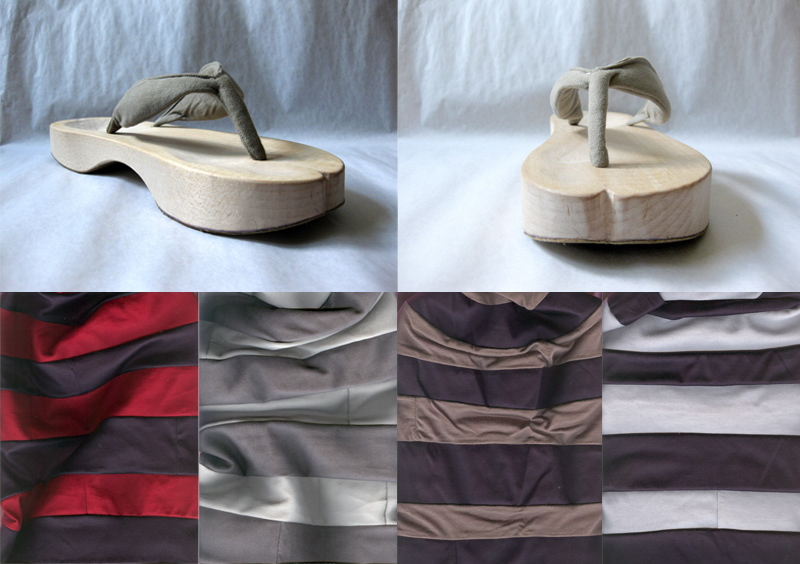
Design: Ruška Miljak
Photo: Ruška Miljak
Model: Andrea Kuzmić
Photo: Ruška Miljak
Model: Andrea Kuzmić

